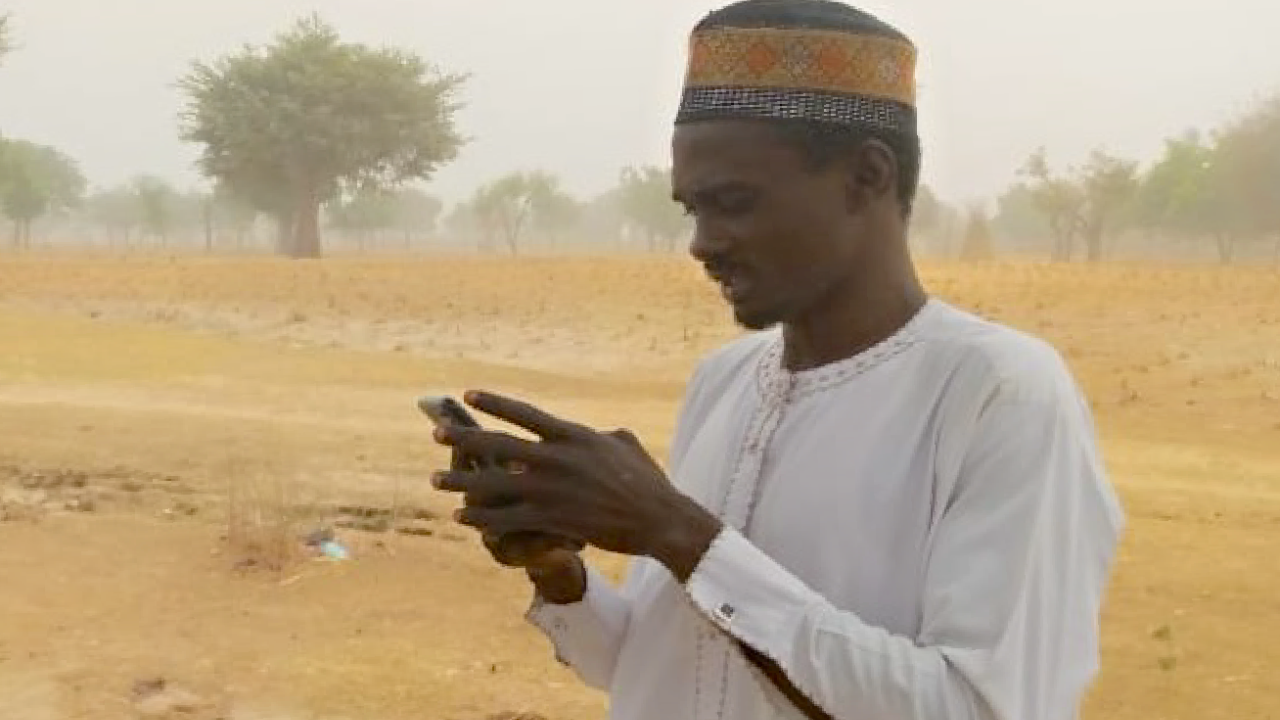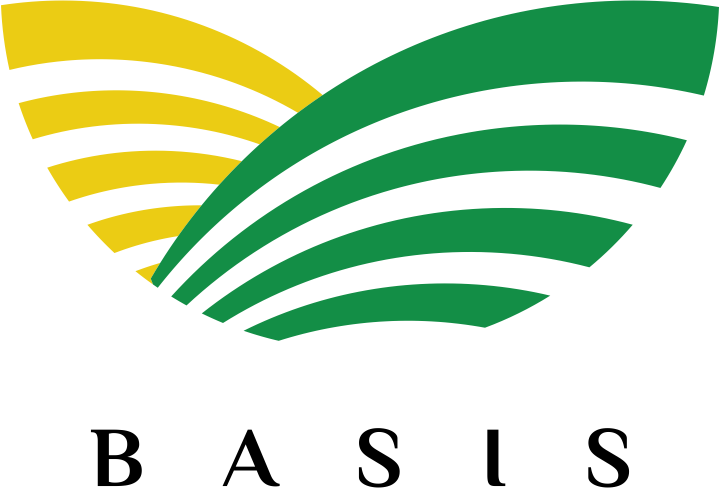
Testing ICT Solutions for Rural Development and Resilience
MRR Lab researchers test innovations to increase well-being and resilience of rural households. As rural households are far from population centers and spread out from one another, a common need is overcoming distance for the exchange of information. Information and Communications Technologies (ICT) can offer powerful solutions.
Specifically, multiple MRR projects are using rigorous research methods to test whether and how ICT solutions can be an effective way to:
- Provide information to dispersed populations
- Improve market efficiencies for farmers
- Reduce basis risk in index insurance
Below, we examine each of these aims and the type of ICT solution being tested by MRR researchers. Each section includes a brief description of how the technology is applied in MRR projects, and an overview of its advantages, challenges, and limitations.

Aim: Provide information to dispersed populations
ICT tool: Phone-based messaging
With long distances and often poor roads, rural areas present challenges around both time and cost in meeting with large numbers of people. As a result, in-person meetings with extension agents or health workers, who have valuable information to pass on, can be rare.
Phone-based messaging—whether text or audio—offers an inexpensive way to reach large numbers of people, with marginal costs of each additional message to an additional person often only a few cents. Phones can also be a critical way to reach people with limited mobility outside of their home—such as women in some socio-cultural contexts, or during a pandemic. The technologies require only a basic phone, ideal for targeting lower-income, rural households.
Bulk SMS messaging does not require any pre-recording; messages can be quickly composed and sent. The MRR/ALL-IN project, Impact of Agro-Weather and Market Information on Productivity and Resilience in Farming Communities in Kenya is evaluating a Government of Kenya program that sends text messages via SMS to farmers with cultivation advice for their crop, based on the weather.
Audio messages have the added advantage of effectively reaching people with limited literacy. Interactive Voice Response (IVR) is the phone system technology that allows incoming callers to interact with pre-recorded voice messages (commonly known as a phone tree in customer service contexts). MRR/ALL-IN project, Digital Innovations to Improve Market Access for Horticultural Produce in Malawi uses such a platform for farmers to call in for extension information. IVR also supports automated, outbound calls. Digital Communication to Reinforce Nutrition and Household Resilience in Northern Ghana sends audio messages to women with nutrition and hygiene information, and has observed impacts on behavior.
Phone-based messaging presents some challenges for research teams. Phones are sometimes shared within households, in which case men tend to be the primary user, potentially complicating reach to women (and even knowing whether women have been reached). Some households frequently change their phone number. Further, increased scam calls can make people hesitant to accept a call from a phone number they don’t recognize. Lastly, while phone-based messaging can be impactful, it cannot replace the types of learning and social capital formed in group settings.

Aim: Improve market efficiencies for farmers
ICT tool: Digital marketplace
The price at which farmers sell their harvest is a critical determinant of their income. This price can be constrained by lack of information about prices in different markets. If farmers have incurred the cost and trouble of transporting their produce to a local output market, they generally accept that market’s price—unaware or unable to take advantage of higher prices elsewhere. However, prices can have significant geographic variation, depending on local levels of supply and demand. Digital marketplace platforms can allow buyers and sellers to much more easily find one another, leading to more consistent pricing among participants.
Digital marketplace platforms may allow users to engage through a smartphone app or simple text messaging. Sellers (farmer or intermediaries) can post what they have for sale and receive and negotiate purchase offers. Some platforms have staff that help match buyers and sellers.
The MRR/ALL-IN Digital Innovations to Improve Market Access for Horticultural Produce in Malawi project is following a best practice by co-creating with their app with intended users. (The Principles for Digital Development, endorsed by many bilateral and multilateral donors, including USAID, include: “Design with People: Good design starts and ends with people who will manage, use, and ideally benefit from a given digital initiative.”)
Digital marketplaces that require a smartphone may see reduced uptake, given that smartphone ownership can still be low—though often growing—in rural areas, and digital skills may be limited. The MRR/ALL-IN Digital Literacy, Output Market Access, and Demand for Rural e-commerce in Nigeria project is studying methods of building digital skills to increase farmer uptake of digital marketplace platforms.
A previous project, Building Market Linkages for Smallholder Farmers in Uganda found that its digital marketplace intervention decreased price variability across markets in the project area. The researchers found significant increases in revenue only among larger-scale farmers, pointing to ongoing challenges of scale for farmers to reach buyers. Even with digital marketplaces, farmers may find continued advantages of aggregating their harvests with others for sale (through cooperatives, etc.). The digital marketplace was found to decrease the profits of one group: market intermediaries, who have earned an income by collecting farm produce from dispersed farmers and remote markets—and who had power to negotiate farm gate prices downward. (Full findings here.)
Many digital marketplace platforms that have been established around the world struggle to cover their operating costs after donor funding ends and as a result are discontinued. An impactful digital marketplace that has altered market relationships may need to take steps to minimize the disruption of its exit on market actors.

Aim: Reduce basis risk in index insurance
ICT tool: Picture-Based Insurance
Index insurance makes it possible for insurance companies to cover smallholder farmers by removing the high time and travel costs of traditional claim assessors to verify individual losses. Instead, insurers use an objective, quantitative index, often based on weather conditions; a payout is triggered when the index values deviate a pre-determined amount over normal levels. A number of technologies are used to measure weather conditions for insurance indices, from satellites to in-ground soil sensors. Despite advances in these technologies, index insurance contracts continue to carry “basis” risk—the possibility that a farmer will experience significant losses due to a cause intended to be covered by the insurance contract (i.e., low rainfall), but the measures employed by the insurance provider do not measure levels sufficient for a payout trigger.
To reduce basis risk, several MRR projects are testing solutions that use digital photography to enable remote evaluation of crop losses on individual fields. Picture-Based Insurance (PBI) is an insurance solution that triggers payouts when there is damage visible in pictures of insured crops. Over time, farmers or field agents take photos of crops in an app on a smartphone or tablet; the photos are then reviewed by a team of evaluators (usually in the capital city) to determine if a payout should be made.
In the MRR project, Crop Insurance Innovations to Build Trust in Financial Services for Agriculture in Ethiopia, PBI is introduced as part of a fail-safe mechanism in an index insurance contract. If a farmer claims to have experienced crop loss due to a covered reason that the index measurement failed to pick up, the farmer can submit photos to be assessed. In the MRR/ALL-IN project, Adapting to Climate Risk with Mutual Weather-Index Crop Insurance in Nigeria, PBI is used as a payout mechanism alongside an index. (PBI can also be the sole mechanism for which payout eligibility is determined. In this case, when the payout trigger is only documented by photograph, the product is no longer considered index insurance.)
Using digital photography is far cheaper than in-person claims visits to fields, though paying evaluators to go through and assess the photos can still be a significant cost. Critically, evaluating photographs to determine losses is more subjective than quantitative indices, and the incentives of photo evaluators should be considered.
Closing
Over the past two decades, the use of ICT for development and agriculture has skyrocketed, and a great many projects around the world now use solutions described under the first two sections. But the use of rigorous, randomized controlled trial research on the solutions’ effectiveness, as conducted by MRR researchers, is less common. As more data is collected over the next year, the MRR Lab anticipates new insights to share around maximizing positive, cost-effective impacts with these technologies.
